Some relationships defy easy explanation — their magic transcends time, place, and rational understanding. The Jewish people’s connection to Israel exemplifies such a bond. Across millennia, poets have waxed lyrical, scholars have pondered deeply, and politicians have passionately debated, all striving to uncover the secret behind our enduring attachment to this small, often arid strip of land nestled in the heart of the Middle East. Yet, even the most eloquent explanations fall short of capturing the full depth of this profound and ineffable tie.
Nevertheless, because this bond stands as a core value central to Jewish identity, it is vital that we keep exploring it, striving to articulate its meaning across generations.. To that end, I present 20 distinct perspectives on Israel’s profound significance to the Jewish people, drawn from archaeological discoveries, ancient texts, timeless religious teachings, and vibrant cultural expressions that span over three thousand years.
1. Biblical covenant: A sacred promise echoing through time
The divine covenant with Abraham represents more than a mere land transaction; it symbolizes a sacred partnership between God and humanity, manifested through the Jewish people’s relationship with a specific land. This covenant wasn’t simply about territory but about creating a specific place where divine ideals could be realized in the material world. According to the Bible, God promises Abraham and his descendants the land of Canaan, forging a relationship that would define Jewish history.
This covenant is not just a theological concept — it is reinforced by archaeological evidence. The Merneptah Stele, an Egyptian inscription from around 1200 BCE, provides the earliest known reference to “Israel” in ancient Egyptian records, attesting to the ancient Israelites’ presence in the region. Today, this covenant remains a living, breathing concept in Jewish consciousness, linking modern Jews to their earliest ancestors through an unbroken chain of tradition and collective memory.
2. The Binding of Isaac: Sacred geography embodied
Mount Moriah — traditionally identified with the Temple Mount in Jerusalem — serves as a physical anchor for one of Judaism’s most profound spiritual narratives: the Binding of Isaac (the Akedah).
This mountain — later the site of the First and Second Temples — transforms a theological concept into sacred geography, demonstrating how in Jewish tradition, spiritual ideas are not abstract but rooted in specific places. The Binding of Isaac not only illustrates the ultimate devotion to divine will but also establishes a spiritual precedent that would echo through Jewish history. Particularly during times of persecution, when Jews were called upon to make profound sacrifices for their faith, the memory of Abraham’s test served as a powerful source of inspiration and resilience.
3. Jacob’s dream: The land as divine gateway
Jacob’s vision of angels ascending and descending a ladder at Beth-El offers a powerful metaphor for Israel as a unique intersection between heaven and earth. In kabbalistic teachings, this vision reveals how Israel functions as a gateway to spiritual dimensions, where divine energies flow more directly into the material world. This understanding permeates Jewish mystical literature, which explains that just as some lands yield more agricultural produce, Israel is uniquely fertile spiritually, making it especially suited for prophecy, divine connection, and holiness.
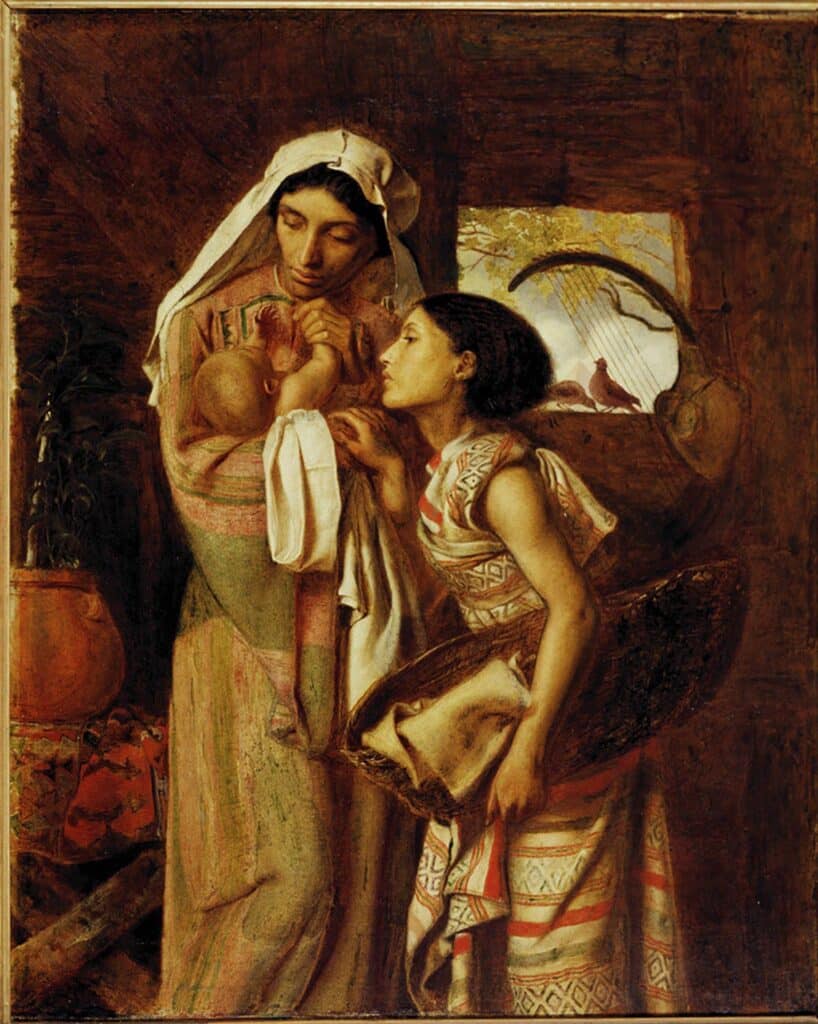
4. The Exodus and Entry into the Land: From Liberation to Purpose
The Exodus narrative ends not in freedom alone but in the return to the Promised Land. This journey established a pattern that would repeat throughout Jewish history — exile and return — creating a paradigm for understanding the Jewish historical experience. As Rabbi Abraham Isaac Kook wrote, the holiness of Eretz Yisrael is the epitome of sanctity, encompassing all other dimensions of holiness. According to Kook, true enlightenment and the fullest expression of Torah wisdom are intrinsically bound to the Land of Israel. This understanding transforms Israel from merely a homeland to the essential space for Jewish spiritual fulfillment.
5. Joshua’s conquest and settlement: Ancestral roots in the soil
The biblical account of Joshua’s conquest and settlement of the land is supported in part by archaeological discoveries across Israel that reveal extensive Israelite habitation settlement in the early Iron Age (1200–1000 BCE). Excavations at sites like Tel Arad, Hazor, and the City of David in Jerusalem have uncovered distinctive features of Israelite architecture, pottery, and cultural practices, providing material connections to the biblical narratives. These ancient settlements reflect the first flowering of uniquely Israelite identity — religious, cultural, and societal — in the land, establishing patterns of life that would influence Jewish practice for millennia to come.
6. The Judges and early kingdoms: National identity formed
The period of the Judges and early monarchies marked a formative era in the development of Jewish national identity, centered in the Land of Israel. Recent archaeological discoveries provide fascinating glimpses into this period. Excavations along the eastern slope of the City of David have uncovered remnants of a First Temple-era fortification, which archaeologists believe withstood various assaults on Jerusalem during this crucial era. The stories of this period — from Deborah’s to the establishment of King David’s united monarchy — continue to shape Jewish self-understanding, providing enduring models of courage, justice, and divine providence that transcend their historical context.
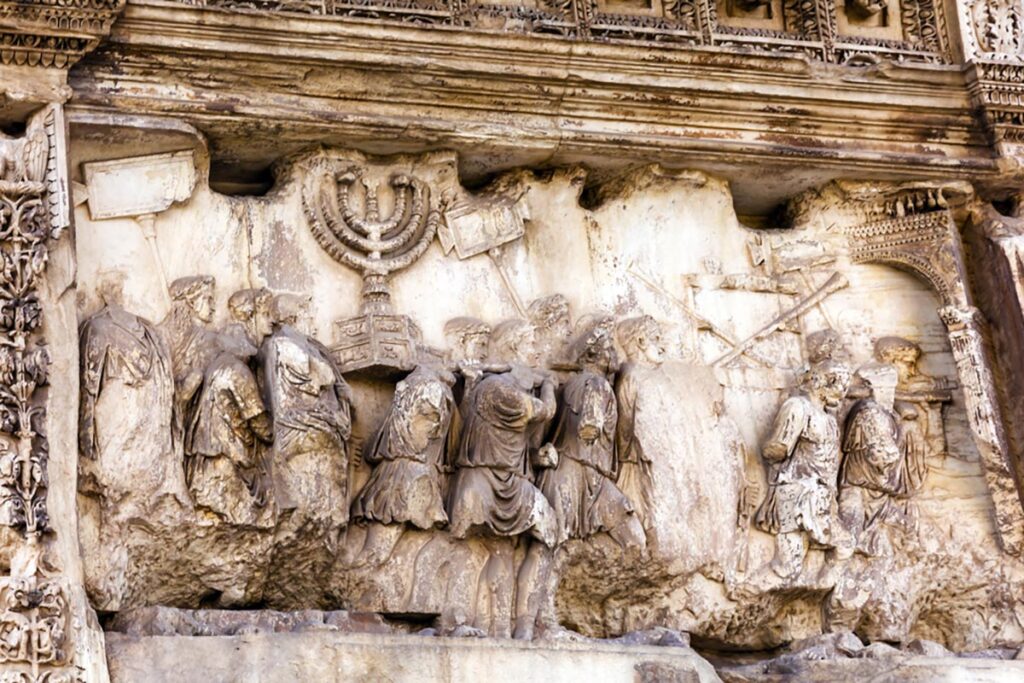
7. Jerusalem as a spiritual epicenter: The heart of Jewish consciousness
The centrality of Jerusalem in Jewish consciousness cannot be overstated. Even after the destruction of the Second Temple in 70 CE and centuries of exile, Jerusalem remained central to Jewish life worldwide. Jews everywhere pray facing Jerusalem, and the Western Wall — the last remaining remnant of the Second Temple complex — stands today as the holiest site in Judaism. Across all eras and geographical locations, Jerusalem appears in Jewish liturgy, literature, poetry, and folklore. The yearning for Jerusalem has inspired some of the most profound expressions of Jewish spirituality, including Judah Halevi‘s famous poem that begins, “My heart is in the East, while I am in the uttermost West.”
8. Pilgrimage festivals: Rhythms of sacred time and space
The three pilgrimage festivals — Passover, Shavuot, and Sukkot — created a cyclical connection between the Jewish people and Jerusalem. These festivals weave together agricultural cycles, historical memory, and spiritual practice, creating a holistic system that unites the land, the people, and God. Even during the long exile, prayers for these festivals focused on their geographical orientation, with Jews concluding the Passover Seder with the declaration “Next year in Jerusalem!” This tradition expressed both memory and hope, maintaining the connection to Israel even when physical presence was impossible.
9. Prophetic visions: The land in Jewish spiritual imagination
Israel’s landscape — its mountains and valleys, deserts and waterways — permeate prophetic literature, providing the physical canvas upon which spiritual truths are painted. In their writings, the physical characteristics of the land become metaphors for the moral and spiritual state of the people. Rain and drought symbolize divine favor and judgment; blooming vineyards and withered fields stand as vivid images of national flourishing or decline. This prophetic tradition established a pattern of reading spiritual meaning into the land’s physical features that continues in Jewish thought today, as seen in Rabbi Nachman of Breslov’s teaching that the holiness of Eretz Yisrael encompasses all other forms of holiness.
10. Exile and return: The land as eternal horizon
Throughout centuries of dispersion, the Land of Israel remained the fixed point in Jewish imagination and prayer. Despite being scattered worldwide and facing consistent persecution, Jews maintained an unwavering connection to the land through religious practices, prayers, and an enduring hope of eventual return. This hope transcended political aspirations; it was deeply spiritual, rooted in faith in divine promises and the ultimate restoration of cosmic harmony. The motif of exile and return became a defining framework for understanding all of Jewish history. It transformed displacement into a meaningful narrative with a promised resolution.
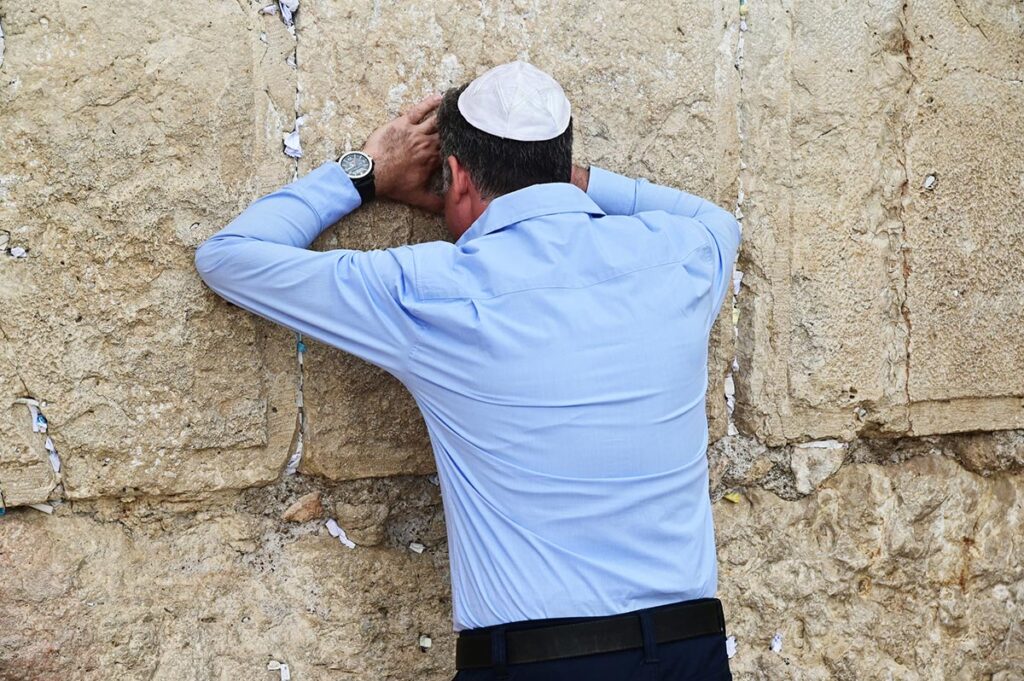
11. The Western Wall: Physical connection to ancient holiness
The Western Wall represents more than just architectural remains; it embodies the enduring Jewish connection to Jerusalem across time. According to Midrashic tradition, the Divine Presence never departed from the Wall, making it a “Gate of Heaven” where prayers ascend directly to the divine. The stones themselves, massive remnants of Herod’s Temple, provide enduring testimony of ancient Jewish presence and practice in Jerusalem. The Wall has become a powerful symbol of continuity, where contemporary Jews can literally touch the same stones their ancestors touched two millennia ago.
12. Agricultural and religious commandments: Sacred ecology
The Torah contains numerous commandments — known as mitzvot hatluyot ba’aretz (“commandments dependent on the land”) — that can only be fulfilled in the Land of Israel. These include agricultural laws like the sabbatical year (Shemitah), leaving the corners of the field for the poor (pe’ah), and various tithes and offerings. These laws created a unique religious ecology, where the rhythms of agriculture became expressions of covenant and spiritual practice. The very act of planting, harvesting, and managing the land becomes an expression of faith and divine partnership. The observance of these commandments emphasizes Israel’s special holiness (kedushah), rendering the land qualitatively different from others. This system of land-based commandments reflects a holistic worldview where the material and spiritual realms are integrated through mindful practice.
13. Historical writings and poetry: The land in Jewish literary imagination
Israel’s landscapes have inspired Jewish writers across millennia, from biblical Psalms to medieval poetry to modern Hebrew literature. During the Golden Age in Islamic Spain, Hebrew poets like Judah HaLevi and Abraham Ibn Ezra composed secular Hebrew poetry celebrating not only themes of love, nature, and wine, but also a deep longing for Zion. This literary tradition maintained a cultural and emotional connection to the land even when physical presence was impossible, creating a rich repository of shared imagination that united dispersed communities with a shared cultural memory that defied exile.
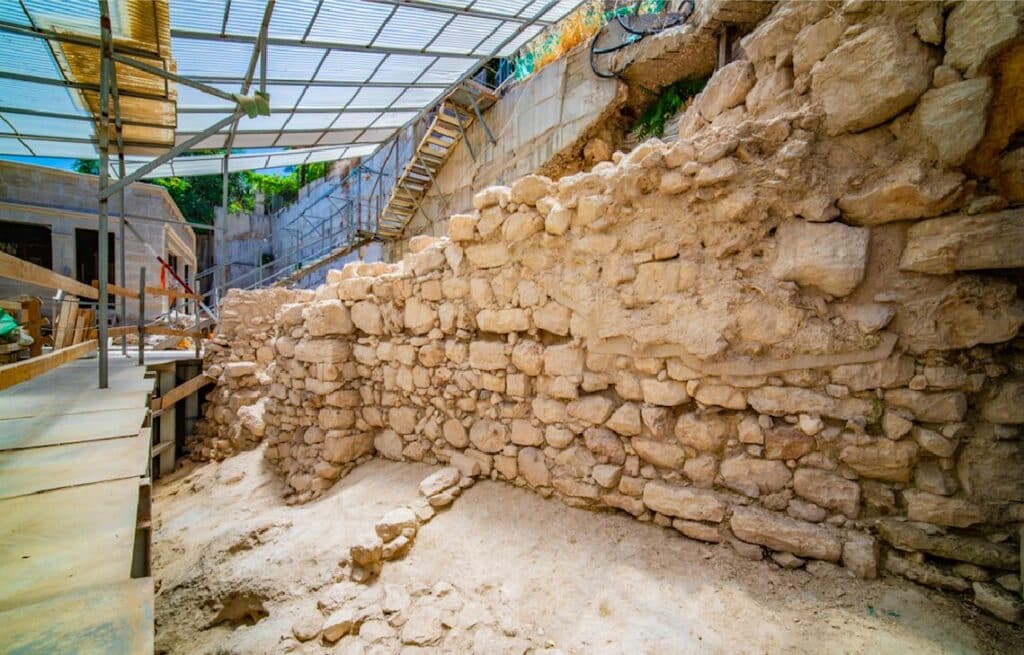
14. Archaeological heritage: Tangible connections to Jewish history
Israel boasts one of the world’s richest archaeological landscapes, with approximately 25,000 archaeological sites packed in a country of just 22,145 square kilometers. These excavations offer extraordinary tangible connections to Jewish history, providing physical evidence of ancient presence, practice, and civilization across millennia.
Recent discoveries include a 5,000-year-old clay jug discovered near Qumran, remnants of a First Temple-era fortification wall in the City of David, and a “rebel coin” believed to have been minted on the Temple Mount during the Jewish revolt against Rome. Such discoveries continue to deepen our understanding of Jewish history in the land.
15. Hebrew language revival: Ancient tongue reborn
The revival of the Hebrew language stands as one of history’s most remarkable linguistic resurrections — the transformation of an ancient sacred tongue into a modern vernacular. This effort, which began in earnest in the late 19th century by visionaries like Eliezer Ben-Yehuda, sought to reforge the broken links between modern Jews and their ancestral heritage. This linguistic revival embodied the broader process of Jewish cultural renewal, creating a bridge between ancient traditions and modern expressions of Jewish identity centered in the Land of Israel.
16. Jewish calendar and land connection: Sacred time and sacred space
The Jewish calendar, with its intricate system of holidays and observances, remains deeply connected to the agricultural cycles and seasonal patterns of the Land of Israel. Festivals like Tu B’Shvat (the New Year for Trees) mark the awakening of nature specific to Israel’s seasons. This connection between religious observance and the land’s natural rhythms reflects the deep integration of geography and spirituality in Jewish tradition. Even Jews living far from Israel experience the land’s rhythms through calendar observances, creating a shared temporal experience that transcends geographical separation.
17. Burial tradition: Final return to sacred soil
The tradition of burial in the Land of Israel, particularly on the Mount of Olives facing the Temple Mount, holds profound spiritual significance in Jewish tradition. This practice reflects the belief that the resurrection of the dead will commence in Jerusalem, making burial in Israel’s soil spiritually advantageous. Throughout history, Jews from distant lands went to extraordinary lengths — often at great personal and financial cost — to ensure they would be laid to rest in the Holy Land, even when they could not live there in life. This practice powerfully embodies the belief that the connection between the Jewish people and the Land of Israel transcends even death itself.
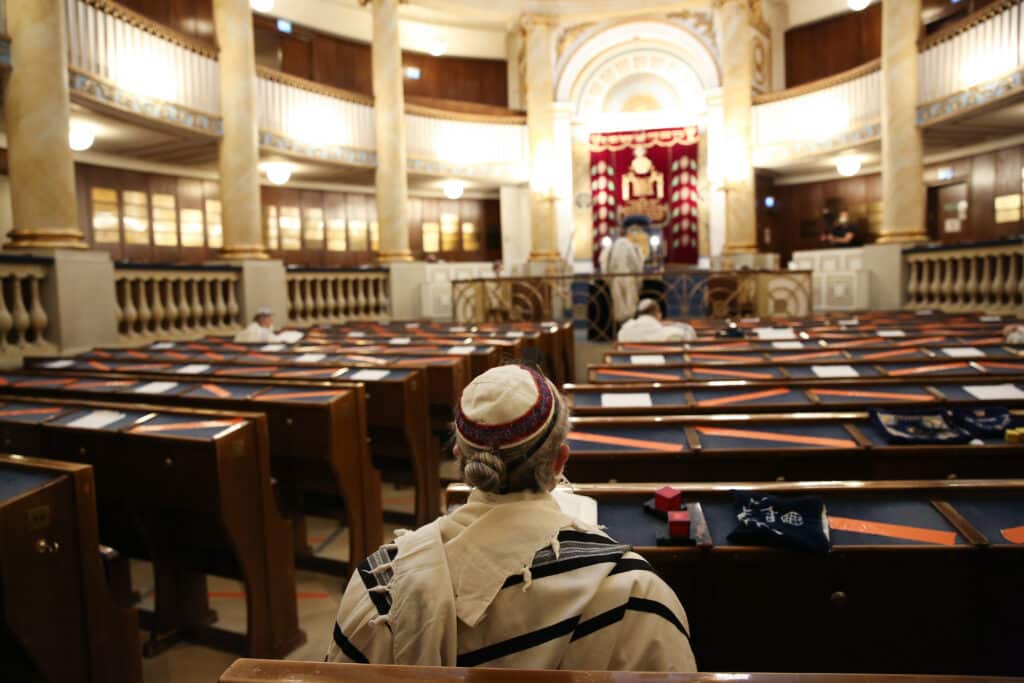
18. Prayer direction: Spiritual orientation toward Jerusalem
The practice of facing Jerusalem during prayer, observed by Jews worldwide for millennia, creates a powerful symbolic geography that places Israel at the center of Jewish spiritual consciousness. Even when Jews pray outside of Israel, their prayers ascend to heaven through Jerusalem, making it the spiritual hub that unites the global Jewish community. The practice was codified during the Babylonian exile, when the prophet Daniel is described as praying with his windows open toward Jerusalem. It established a pattern that would maintain Jerusalem’s centrality throughout centuries of dispersion.
19. Tisha B’Av: Collective memory of loss and hope
Tisha B’Av, the annual fast mourning the destruction of both the First and Second Temples, creates a powerful ritual of remembrance that has preserved the memory of Jerusalem across generations. This observance, along with customs like breaking a glass at weddings to remember Jerusalem at a moment of personal joy, further embeds the loss of sovereignty in Jewish collective consciousness while maintaining hope for restoration. Tisha B’Av represents the Jewish approach to historical trauma — acknowledging profound loss while affirming hope in ultimate redemption and return.
20. Aliyah: The ascent to sacred purpose
The concept of aliyah (ascent) for immigration to Israel carries profound symbolic meaning. It suggests that moving to Israel is not merely a change of residence but a spiritual elevation, a return to a higher state of being. This terminology, rooted in early rabbinic sources, reflects the belief that Israel is metaphysically “higher” than other lands. In modern times, alliyah represents the fulfillment of prayers recited by countless generations, transforming ancient hopes into lived reality. This movement embodies the dynamic nature of Jewish identity, rooted in ancient traditions yet constantly renewing itself through engagement with contemporary realities.
The essence of connection to Israel
As Rav Kook eloquently wrote, “Eretz Yisrael is not a superficial element, a possession external to the essence of the nation, merely a means to the goal of establishing a comprehensive union. Eretz Yisrael is an essential element connected by way of a living bond to the nation, attached through its inner qualities to its essence.” This profound insight captures the heart of Israel’s importance to the Jewish people — not simply as a historical homeland or political refuge, but as the physical expression of Jewish spiritual identity.
The connection between the Jewish people and the Land of Israel transcends conventional categories of nationalism or religion. It represents a singular relationship that has sustained Jewish identity through millennia of dispersion, exile, and return, forming the essential foundation upon which the entire edifice of Jewish civilization has been built. In this sacred geography, heaven and earth, past and future, individual and community find their meeting place, creating a bond that continues to nourish Jewish life in all its dimensions. It is a bond written not only in sacred texts, but also in memory, ritual, longing, and renewed action — an eternal covenant, ever alive.
